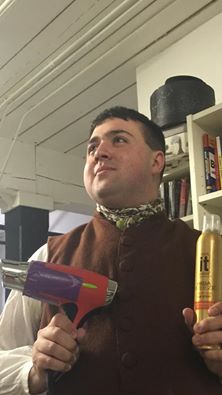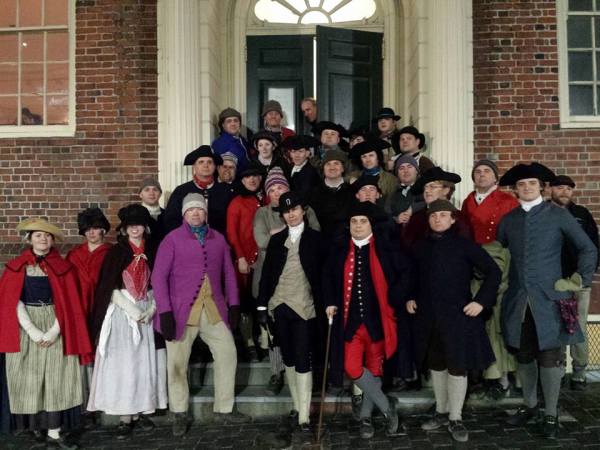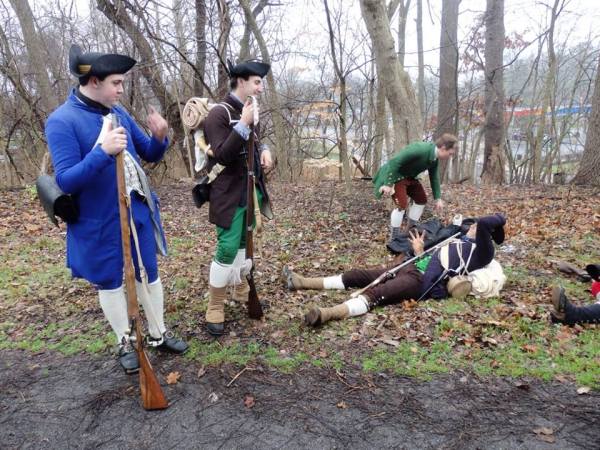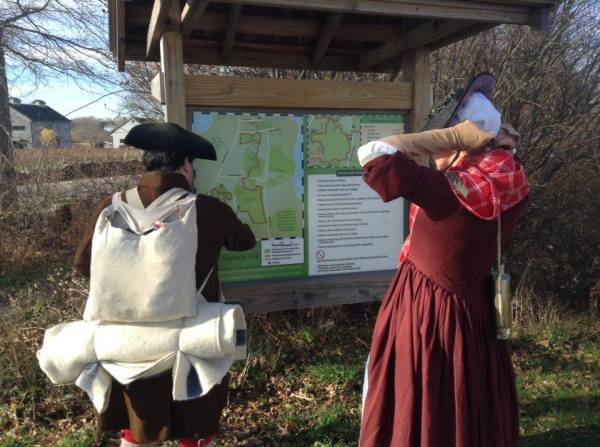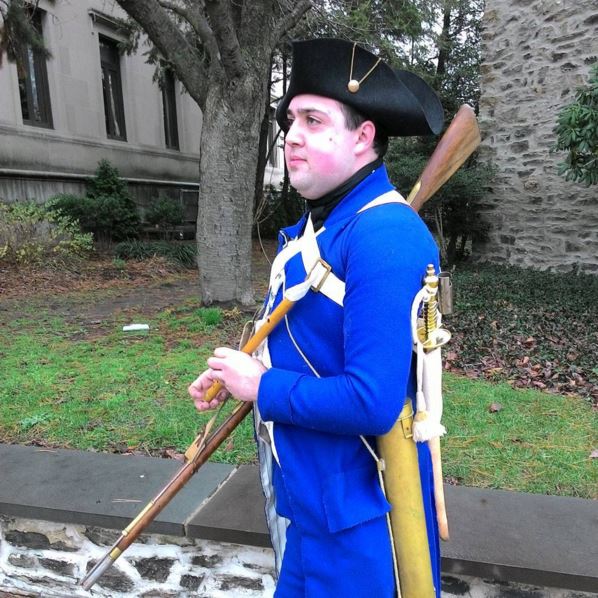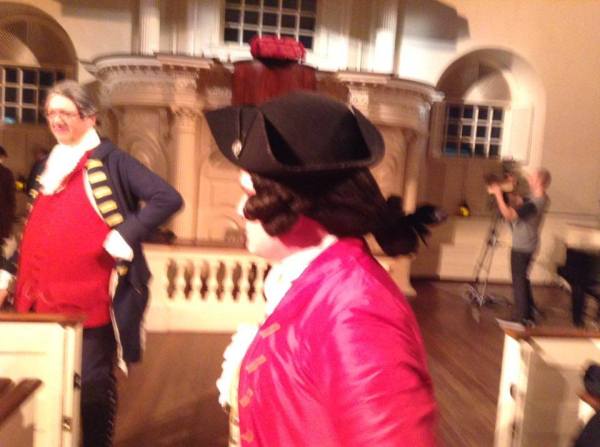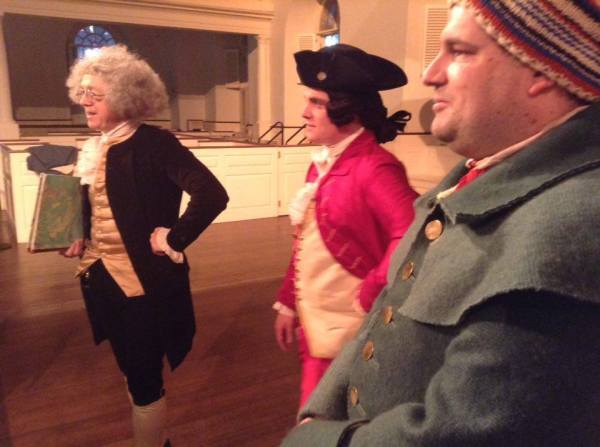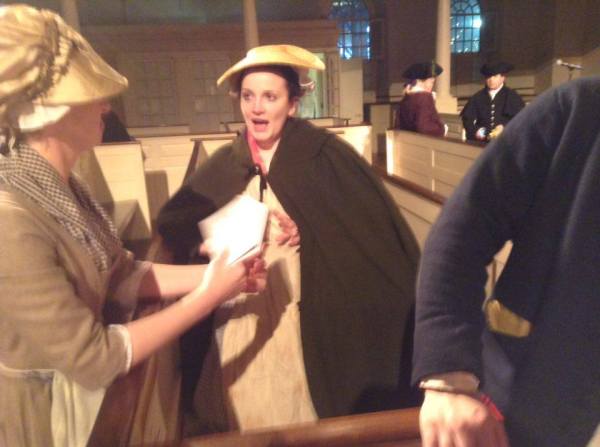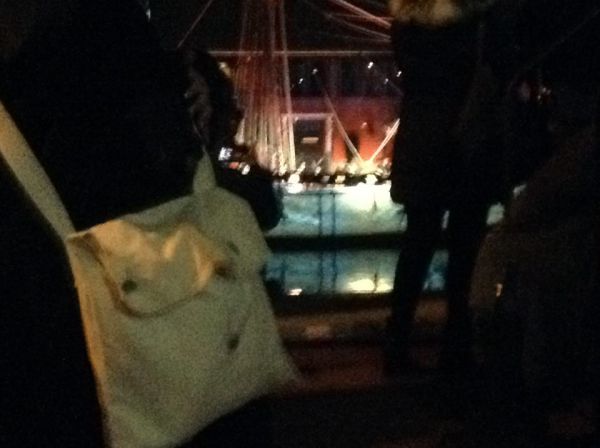As mentioned in the last post, a new coat has been made! Because everything I make gets named, (the blue suit is fondly known as Cookie Monster) this coat needed one. It got its name for a variety of reasons:
- In Les Misérables, there is a song titled Red and Black, the colours of this coat.
- The coat is a 1777 French Contract Coat and therefore needed a French name.
- In time, this coat would come to have some miserable moments of its own.
But lets go back to the how the coat started. The idea came up a few days after the Trenton Death March of 2015. With feet still swollen and unable to walk right, my friend who is fondly called The Don or Sugah Daddy here in Rogues Island, contacted me and another drummer discussing how we kicked some butt at Trenton and with this little piece of documentation:

Boston Gazette. February 1st, 1777.
At my very first camping event at Saratoga National Historical Park, I picked up a print of an American drummer based off of that description and it hangs prominently in my room. So when asked if we’d be willing to recreate the look for Fort Ticonderoga’s Carry on the Works in the Northern Army and Defiance and Independence, you bet your bottom dollar we pounced on it.
At first sight, this looks like one hell of an expensive drummer/fifer’s kit. Leather breeches will run you about $800 to get them sewn. Wool, buttons, beaver hats, and where the hell do you get white shoes? After discussion, James Wier was probably the Drum Major for Colonel Bradford’s 14th Regiment which explains the fancy clothes. Our drummer will donning it all except for the white shoes while I will be in the Les Misérables coat and beaver hat.
And now we delve into the process.
Step 1: Get the pattern. Where else would I go except right to the source? Our Girl History hooked me up with a pattern after I gave her my measurements. It came the same day I passed my PRAXIS: CORE test so I was in a good mood. I got right to cutting it out.

I seriously can’t shake this nickname.
Step 2: Make a muslin draft. Muslin is a cheap-arse, polyester linen suitable (in my opinion, even for modern items) for making drafts or workable patterns and only that. Because I had so little red wool (and it was donated), numerous sources advised me to do this. Measure twice, cut once. It’s a good thing I made the draft because Uncle Hank had to rework the front and the arm holes to get the coat to lay correctly. If we had just chopped into the wool, I would’ve been doomed.

Lacking a real sewing table, all my cutting is done on the floor in my living room.
Step 3: Cut the wool. This was one heck of a challenge. We had about 2 yards of scarlet to work with and about the same in black. It took about 30 minutes of maneuvering the pattern pieces to decide how to get the pieces to fit while keeping the nap the same.What we ultimately had to do was piece a couple of pieces, a process I’ll explain in a few steps.
Step 4: Get the rest of the supplies. I needed buttons and we had a debate on what to do for them. Numbered buttons was a thought but after talking with The Don, he said that the Continental Army was going through a renumbering process at this point so we should steer clear of them to air on the side of caution. Then there was the question: Pewter or brass? Ultimately, the choice was up to me. I decided brass would look good on the black. Unbleached linen thread, 1/4″ dutch linen tape, 30 one inch plain brass, and a single 3/4″ plain brass was all I needed to get.

The Hitchhiker’s Guide to the 1777 French Contract Coatee. Ignore my sporadic notes.
Step 5: Assemble sleeves. First, I pinned the sleeves together and backstitched them. Then came the cuffs. I sewed the seam together then pinned them on to the sleeve. Once pinned, a space backstitch was used to attach them to the sleeve. Safely backstiched, the part that got folded under was whipped to the inside.
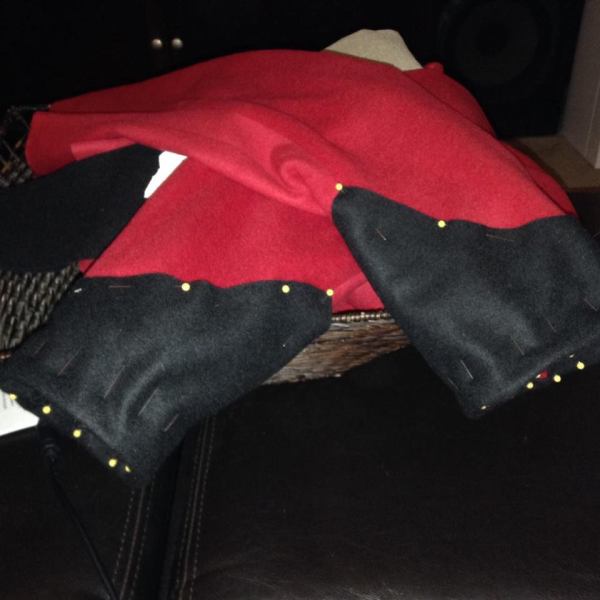
Cuffs pinned in; making sure that the cuff point lines up with the inside seam on the sleeve.

Pointed cuffs are nifty. Spaced backstitched in and awaiting to be whipped.
Step 6: Take care of piecing. Like I said, this coat needed some extra work. Uncle Hank decided that the best places were to piece were the tails on the back panels and in the shoulders. That involved not cutting part of the back panel and then cutting the piece we didn’t cut out of scrap wool. Once I had the pieces, I pinned them to where they belonged and whip-stitched the sucker on to the back tails. After whipping, they were pressed open, just like any other seam. The other pieces were tiny triangles that are where the top of the shoulder and sleeve meet. They were also whipped into place and pressed.
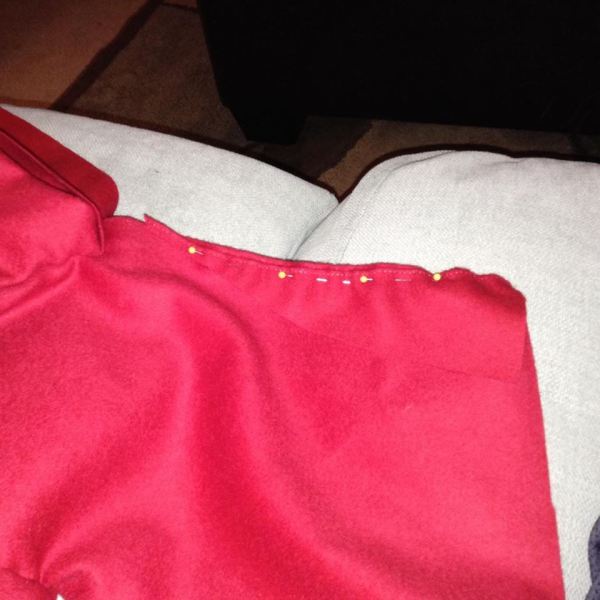
Piecing pinned in

Piecing after being whipped

Back panel tail with piecing opened but not pressed yet
Step 7: Interfacing. Most coats feature some sort of interfacing. Buckram, a stiff linen, is commonly used to keep the coat’s shape. I applied it with a zig-zag stitch to the front bodies. It didn’t matter if my stitches showed through to the other side because the facing would cover them.
Step 8: Facings. The Les Misérables needed the black to its red. The facings were applied by taking the black lapels and laying them on the body, making sure about an inch was left be folded to the inside. Once pinned, a spaced backstitch was used to attach them and then the folded over portion was whipped to the inside.

Facing featuring the spaced bakstitch.
Step 9: Buttons. Normally, I would dread this part. Putting 18 buttons on the facings for most coats would mean 18 buttonholes. Fortunately, this coat doesn’t do that! They only get stabbed in because the facings are non-functioning, meaning they’re sewed down. So I took the pattern that had places for the buttons pre-marked and stabbed holes using an awl. Once the holes were made, I strung the dutch linen tape through the shanks of the buttons. All the while, I pinned down the tape so it didn’t shift as I worked the other buttons. After they were all corded in, I whipped both sides of that tape down to the panel so they wouldn’t move.

30 freshly polished brass buttons awaiting their coat.
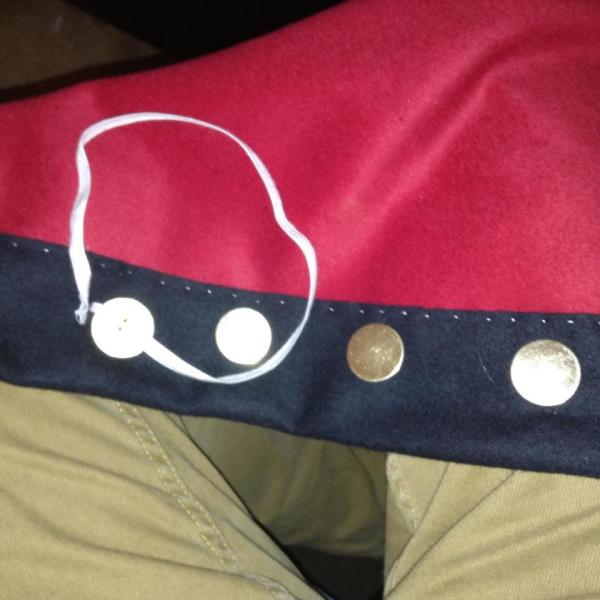
When I cord, I pull my cord through to the front, push it through the button’s shank, then back through the hole it came through. Saves me time and frustration trying to do it on the inside of the coat.

Pinning as I go along to prevent the tape from moving.
Step 10: Pocket flaps. The contract coat features false vertical pocket flaps. Très Français. The edge facing the lapels gets folded under to give the illusion of a functional flap and is whipped down. The rest of the edges uses a spaced backstitch. Three buttons are attached in the same process as Step 9 near the points of the pocket flap.
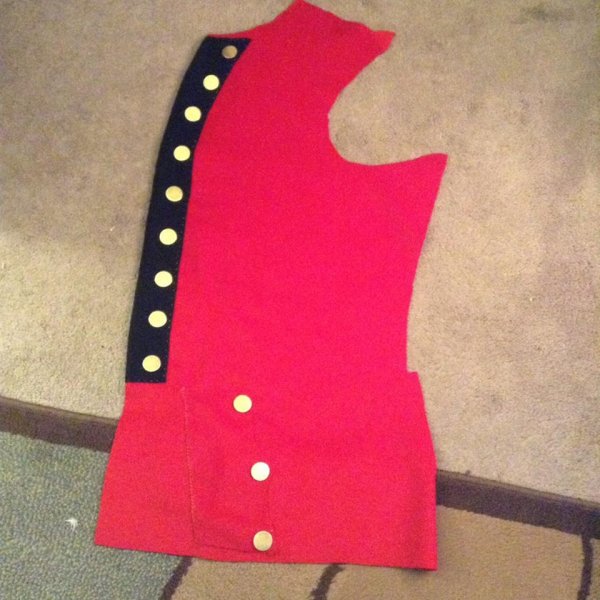
Completed pocket flap on the front panel.
Step 11: Linings. You would think this would be one of the last steps but by putting in the linings on each panel before sewing them up, it makes life so much easier in the end. This coat is only half lined. Saves money and makes my life slightly easier. They get applied and fell stitched down to the body while trying to avoid stitches showing through to the other side. This took some practice and a lot of cutting and re-stitching.


The fell stitch
Step 12: Stitching the panels. The moment we’ve all been waiting for! Where the coat goes from random things of wool to a garment! A back stitch with a 1/4″ seam allowance did the trick.
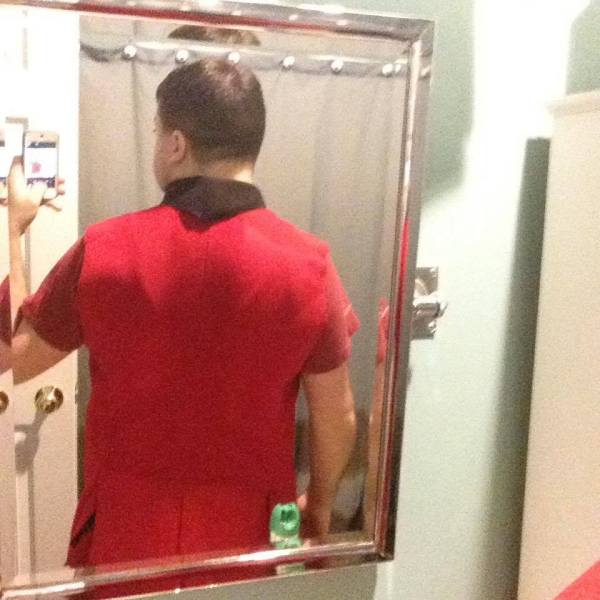
Step 13: Collar. This is where all hell broke loose and the Les Misérables coat earned its name. At this step, I realised two things: I only had an upper collar cut and that upper was too small. So, I first enlarged the upper about an inch and a half in length but not before I had cut an under collar from some scrap scarlet wool using the old small collar pattern. So the under collar I cut was too short and I didn’t have enough red to cut a new one. Time to piece it! Some hunks of red scrap did the trick…sort of. But nobody has to see that and I can just blame those pesky French contractors for bad sewing. So the under collar, piecing and all, went on and then the upper collar was stitched on using that spaced backstitch and whipping it down to the panel.

This got ugly real fast.

Step 14: Sleeves. These also proved tricky. I always have problems with sleeves and getting it so they don’t create bubbles in the panels. Well, I very nicely backstitched one sleeve in and had that problem so I had to cut it out. Frustrated, I turned to Low Spark for help who graciously sat with me for 3 hours and pinned the sleeves in as I tried it on about 7 or 8 times to get the fit just right. After that, everything was back on track and I essentially had a coat.
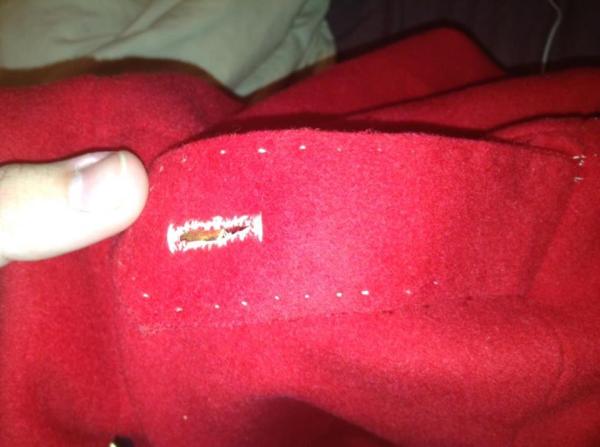
Shoulder strap built into the left sleeve
Step 15: Pleating. In the tail section, pleating had to be done to give the coat the right look. Those tail pieces we worked so hard on, get covered up. Any tailor lacking wool would have done the same and ultimately, the client would not have wanted to see it. I was a little bummed that the main chunks got hidden but there’s still those tiny triangles in the shoulder. After I pinned it, Uncle Hank gave his approval and a few stab stitches to secure the pleats sealed the deal.

You can no longer see the piecing and the coat now sports two shiny brass buttons.
Step 16: Final lining stitching. The lining in the front and back panels gets joined up to create one “super lining” in the coat. The parts left un-stitched get folded on to each other and a whip stitch finalises the whole process. The turn backs at the front of the coat are also stab stitched into place at this step.

Front panel lining and back panel lining meeting point

The final stitch!
And there we have it! A finished coat in all its glory! I’m really happy with how it came out and had a lot of fun (for the most part) making it. A couple new stitches were learned and I finally have my very first drummer/fifer-specific coat to call my own. It will be making its soft opening this weekend at a local event to see if any stitches start to tear and to break the coat in but its grand debut will be at Carry on the Works, which is looking to be an amazing event!



Press one of these buttons and get a biscuit:


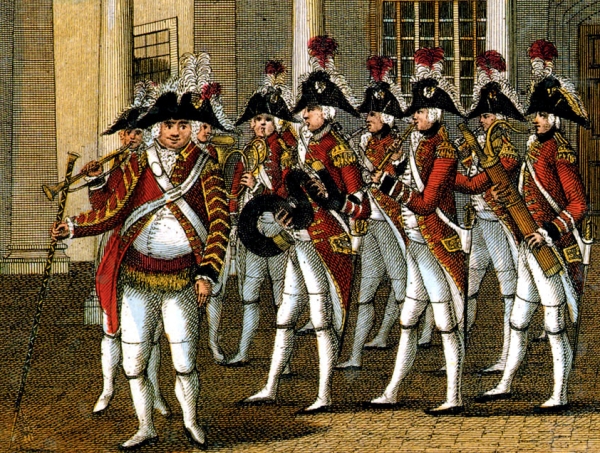




























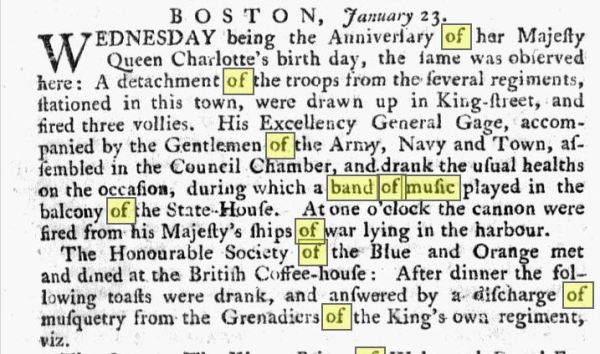
![[THE] Freeman's Journal, OR New-Hampshire Gazette. (Portsmouth, New Hampshire) • 09-07-1776 • Page [4]](https://fife4life.files.wordpress.com/2016/03/the-freemans-journal-or-new-hampshire-gazette-portsmouth-new-hampshire-e280a2-09-07-1776-e280a2-page-4.jpg?w=600)
